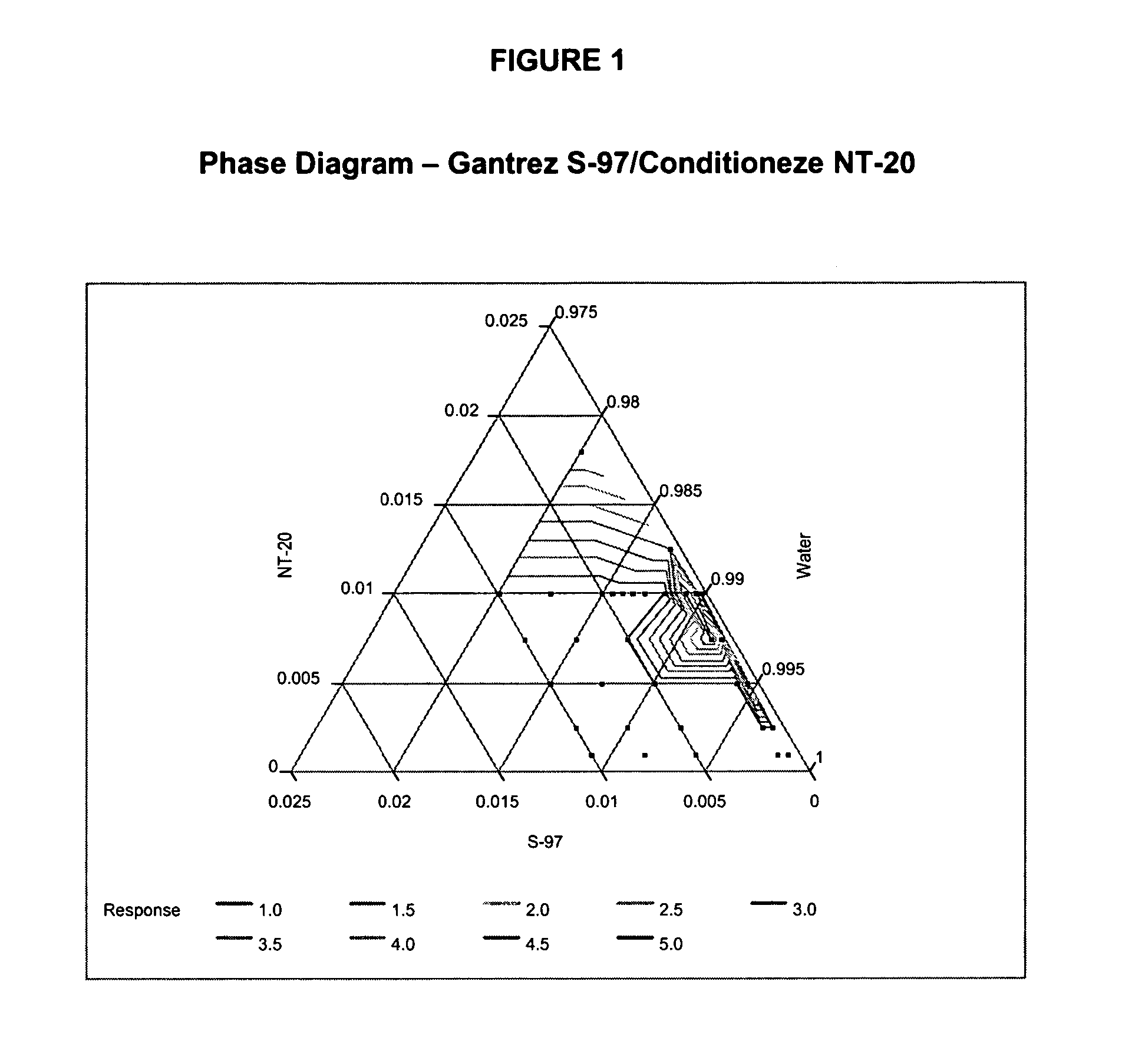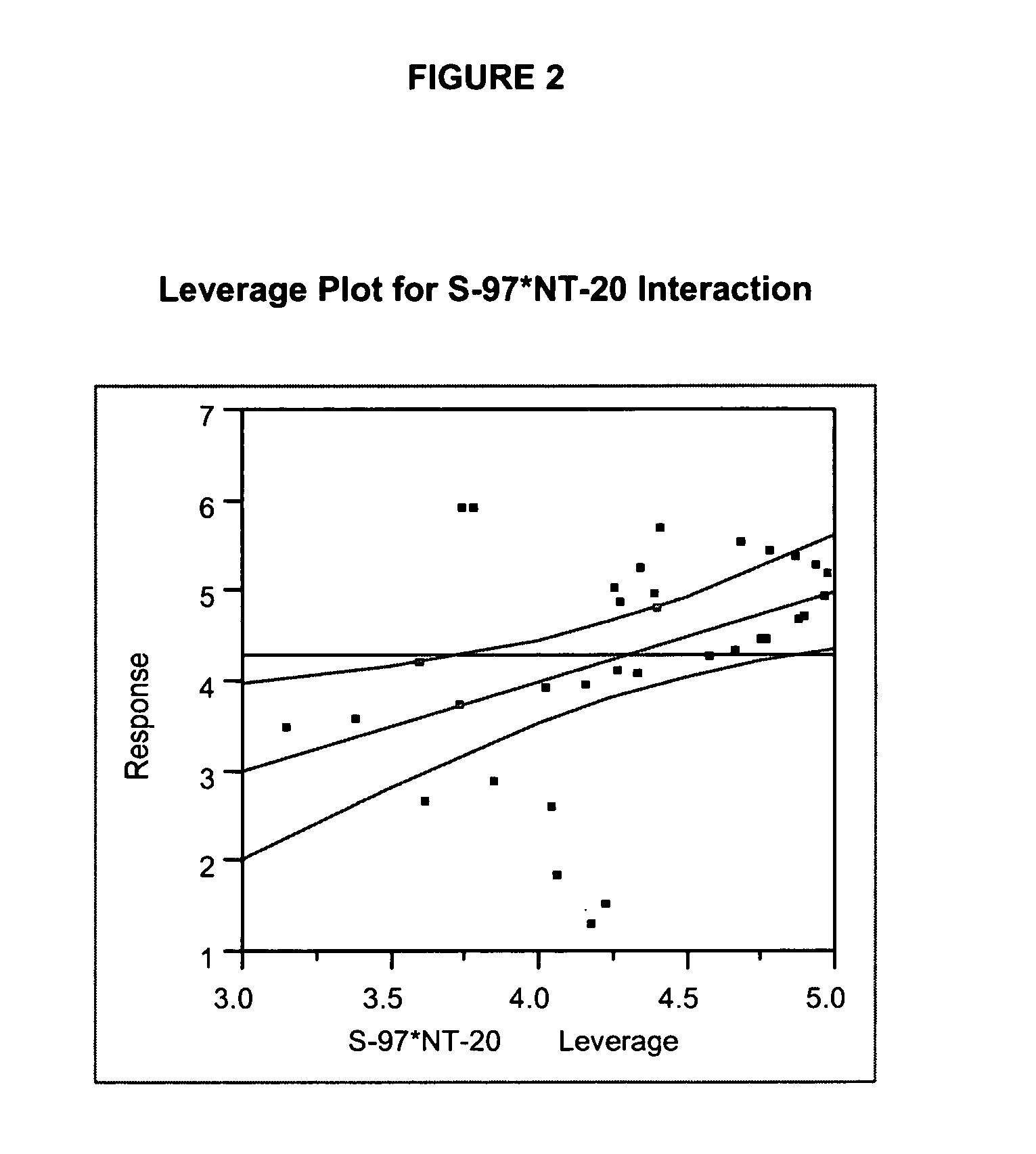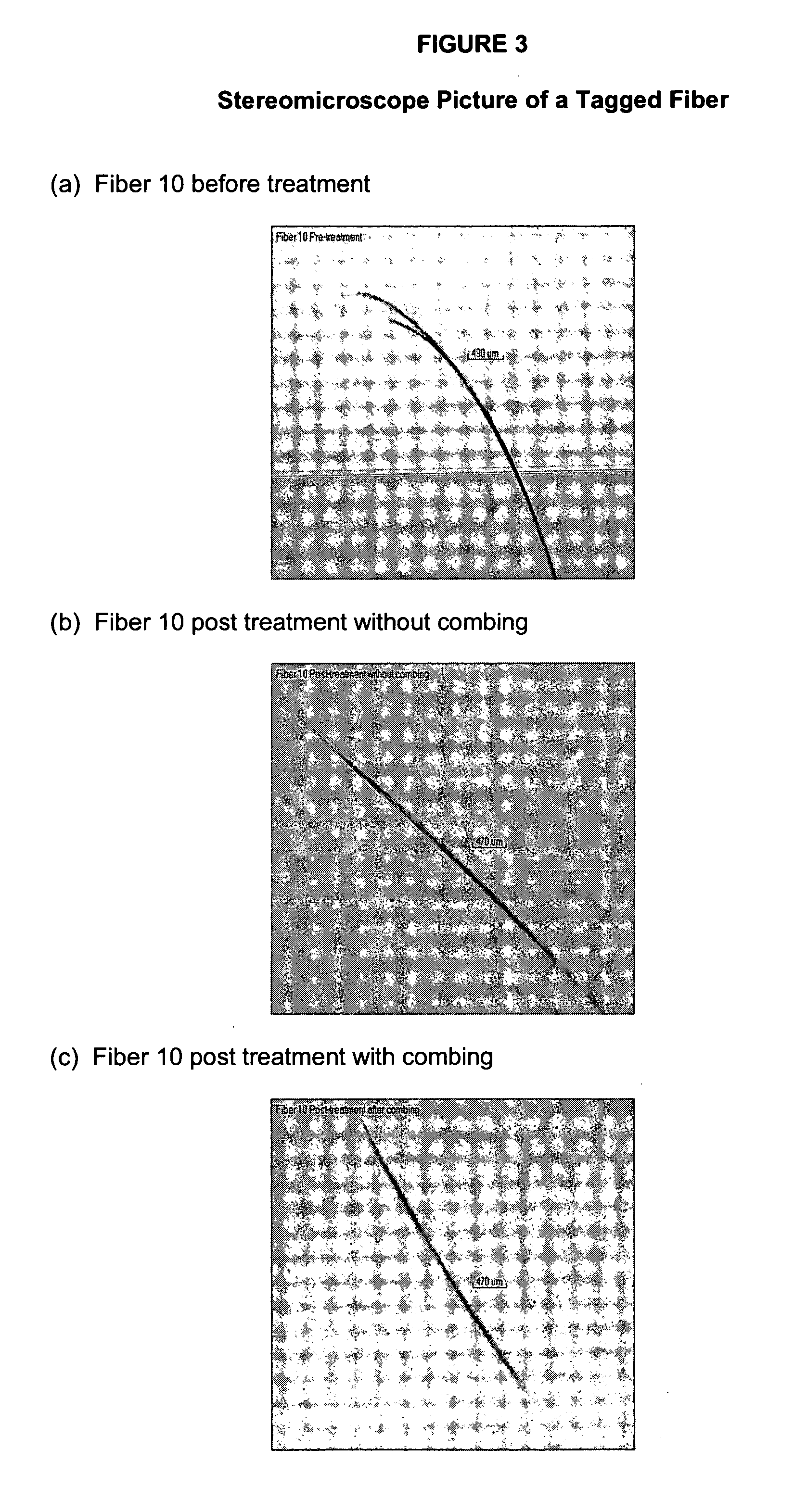Mending hair damage with polyelectrolyte complexes
a polyelectrolyte complex and hair technology, applied in the field of hair care compositions, can solve the problems of fiber snarling, split ends, hair being more susceptible to mechanical damage,
- Summary
- Abstract
- Description
- Claims
- Application Information
AI Technical Summary
Benefits of technology
Problems solved by technology
Method used
Image
Examples
Embodiment Construction
[0029] The scope of this application deals with one form of hair repair, specifically split end mending. This invention provides an improved method for assessing split end repair to substantiate the ability of a polyelectrolyte complex between Gantrez® S-97 and Conditioneze® NT-20 to repair this type of hair damage. The major feature of the improved test method used for the assessment of split end repair consists of tagging particular split ends fibers in a hair tress. The tagging allows the study of the fate of that particular split end, and importantly subjecting it to normal combing stresses in order to determine the permanence of the mend. This invention, however, is concerned with split end repair and mending rather than prevention. Two mechanisms are at work in the repair process. The first of these is film formation preferably from a substantive polymer. When the fiber is wet the split end will fuse together through surface tension forces. Also, at this stage the cationic pol...
PUM
| Property | Measurement | Unit |
|---|---|---|
| Weight ratio | aaaaa | aaaaa |
Abstract
Description
Claims
Application Information
 Login to View More
Login to View More - R&D
- Intellectual Property
- Life Sciences
- Materials
- Tech Scout
- Unparalleled Data Quality
- Higher Quality Content
- 60% Fewer Hallucinations
Browse by: Latest US Patents, China's latest patents, Technical Efficacy Thesaurus, Application Domain, Technology Topic, Popular Technical Reports.
© 2025 PatSnap. All rights reserved.Legal|Privacy policy|Modern Slavery Act Transparency Statement|Sitemap|About US| Contact US: help@patsnap.com



